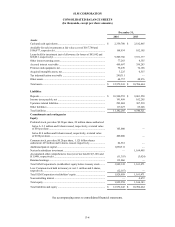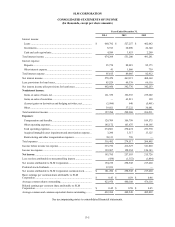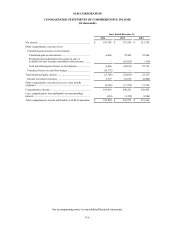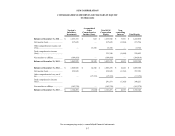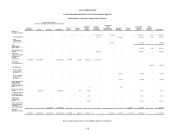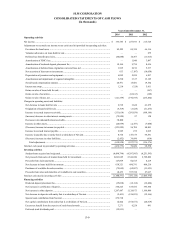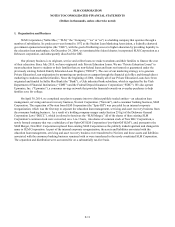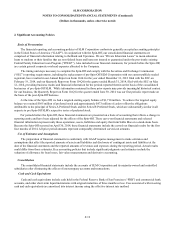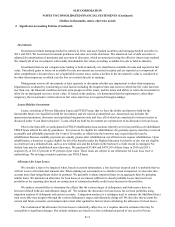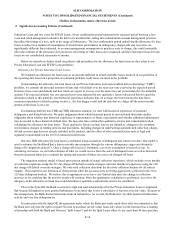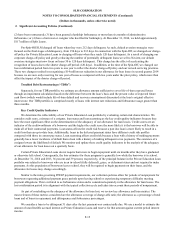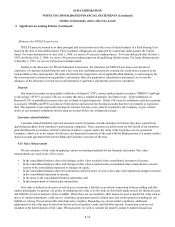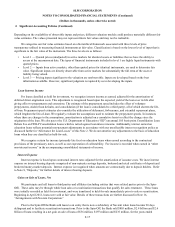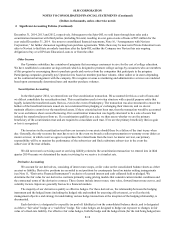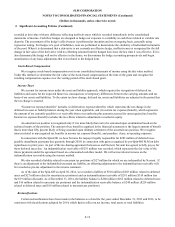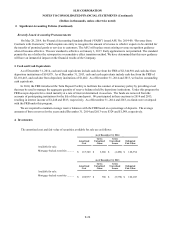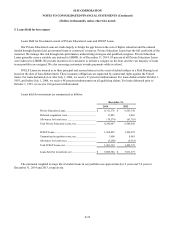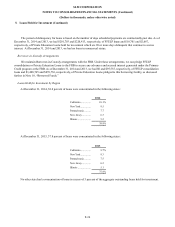Sallie Mae 2014 Annual Report Download - page 98
Download and view the complete annual report
Please find page 98 of the 2014 Sallie Mae annual report below. You can navigate through the pages in the report by either clicking on the pages listed below, or by using the keyword search tool below to find specific information within the annual report.SLM CORPORATION
NOTES TO CONSOLIDATED FINANCIAL STATEMENTS (Continued)
(Dollars in thousands, unless otherwise noted)
2.
Significant Accounting Policies (Continued)
Education Loans and two years for FFELP Loans. A loss confirmation period represents the expected period between a loss
event and when management considers the debt to be uncollectible, taking into consideration account management practices
that affect the timing of a loss, such as the usage of forbearance. The loss confirmation period underlying the allowance for loan
losses is subject to a number of assumptions. If actual future performance in delinquency, charge-offs and recoveries are
significantly different than estimated, or account management assumptions or practices were to change, this could materially
affect the estimate of the allowance for loan losses, the timing of when losses are recognized, and the related provision for loan
losses on our consolidated statements of income.
Below we describe in further detail our policies and procedures for the allowance for loan losses as they relate to our
Private Education Loan and FFELP Loan portfolios.
Allowance for Private Education Loan Losses
We maintain an allowance for loan losses at an amount sufficient to absorb probable losses incurred in our portfolios at
the reporting date based on a projection of estimated probable credit losses incurred in the portfolio.
In determining the allowance for loan losses on our Private Education Loan non-troubled debt restructuring (“TDR”)
portfolio, we estimate the principal amount of loans that will default over the next year (one year being the expected period
between a loss event and default) and how much we expect to recover over the same one year period related to the defaulted
amount. The expected defaults less our expected recoveries adjusted for any qualitative factors (discussed below) equal the
allowance related to this portfolio. Our historical experience indicates that, on average, the time between the date that a
customer experiences a default causing event (i.e., the loss trigger event) and the date that we charge off the unrecoverable
portion of that loan is one year.
In estimating both the non-TDR and TDR allowance amounts, we start with historical experience of customer
delinquency and default behavior. We make judgments about which historical period to start with and then make further
judgments about whether that historical experience is representative of future expectations and whether additional adjustments
may be needed to those historical default rates. We may also take certain other qualitative factors into consideration when
calculating the allowance for loan losses. These qualitative factors include, but are not limited to, changes in the economic
environment, changes in lending policies and procedures, including changes in underwriting standards and collection, charge-
off and recovery practices not already included in the analysis, and the effect of other external factors such as legal and
regulatory requirements on the level of estimated credit losses.
Our non-TDR allowance for loan losses is estimated using an analysis of delinquent and current accounts. Our model is
used to estimate the likelihood that a loan receivable may progress through the various delinquency stages and ultimately
charge off (“migration analysis”). Once a charge-off forecast is estimated, a recovery assumption is layered on top. In
estimating recoveries, we use both estimates of what we would receive from the sale of delinquent loans as well as historical
borrower payment behavior to estimate the timing and amount of future recoveries on charged-off loans.
The migration analysis model is based upon sixteen months of actual collection experience, which includes seven months
of collection experience using the 212 day charge-off default aversion strategies and nine months of experience using the 120
day charge-off default aversion strategies. We only used collection data from the first four collection buckets for all sixteen
months. This resulted in our inclusion of older periods when the accounts were not being aggressively collected in the 30 to
120 days delinquent buckets. We believe this is appropriate as we have very limited data since the change in collection
practices to be confident that the positive trends will continue. Once the quantitative calculation is performed, we review the
adequacy of the allowance for loan losses and determine if qualitative adjustments need to be considered.
Prior to the Spin-Off, the Bank exercised its right and sold substantially all of the Private Education Loans it originated
that became delinquent or were granted forbearance to an entity that is now a subsidiary of Navient at its fair value. Because of
this arrangement, the Bank did not hold many loans in forbearance. As a result, the Bank had very little historical forbearance
activity and very few delinquencies.
In connection with the Spin-Off, the agreement under which the Bank previously made these sales was amended so that
the Bank now only has the right to require Navient to purchase (at fair value) loans only where (a) the borrower has a lending
relationship with both the Bank and Navient (“Split Loans”) and (b) the Split Loans either (1) are more than 90 days past due;
F-14


